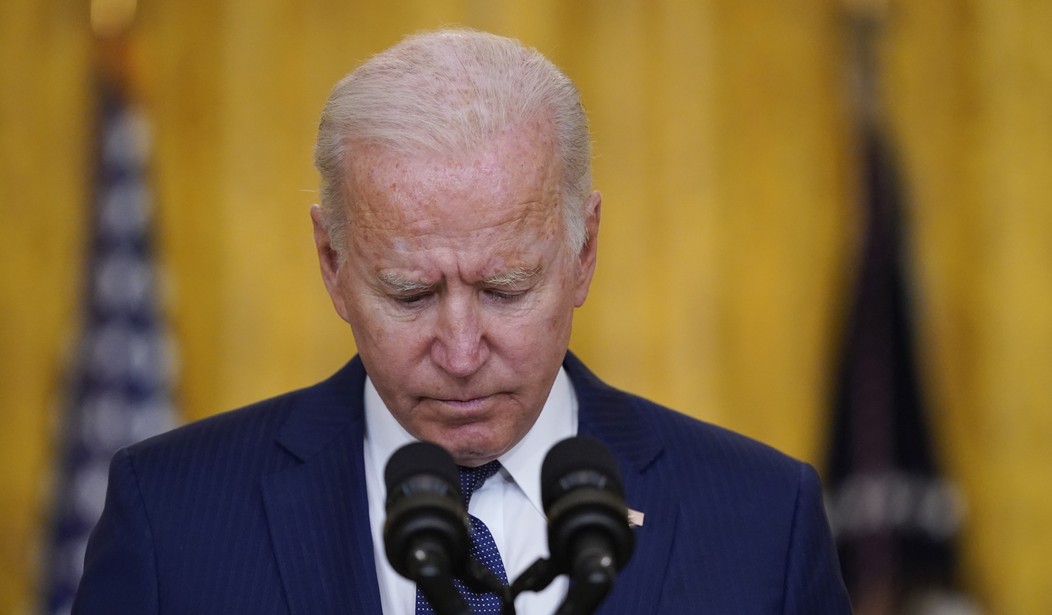Talk about a whiff. The number of jobs added in September’s BLS report didn’t even get to half of what economists expected to see, and even that was lower than the jobs-added rate in the first part of the year. Only 194,000 jobs got created last month while participation rates remain mired well below pre-pandemic levels:
Total nonfarm payroll employment rose by 194,000 in September, and the unemployment rate fell by 0.4 percentage point to 4.8 percent, the U.S. Bureau of Labor Statistics reported today. Notable job gains occurred in leisure and hospitality, in professional and business services, in retail trade, and in transportation and warehousing. Employment in public education declined over the month …
The unemployment rate fell by 0.4 percentage point to 4.8 percent in September. The number of unemployed persons fell by 710,000 to 7.7 million. Both measures are down considerably from their highs at the end of the February-April 2020 recession. However, they remain above their levels prior to the coronavirus (COVID-19) pandemic (3.5 percent and 5.7 million, respectively, in February 2020). …
The labor force participation rate was little changed at 61.6 percent in September and has remained within a narrow range of 61.4 percent to 61.7 percent since June 2020. The participation rate is 1.7 percentage points lower than in February 2020. The employment-population ratio, at 58.7 percent, edged up in September. This measure is up from its low of 51.3 percent in April 2020 but remains below the figure of 61.1 percent in February 2020.
In fact, the revisions to the last two months almost equaled the growth in September:
The change in total nonfarm payroll employment for July was revised up by 38,000, from +1,053,000 to +1,091,000, and the change for August was revised up by 131,000, from +235,000 to +366,000. With these revisions, employment in July and August combined is 169,000 higher than previously reported.
The drop in the unemployment rate came from a decrease in the labor force, not from the anemic number of jobs added. The overall labor force dropped by 183K, almost the same amount of new jobs, and the number of those not in the labor force also grew by 338,000. This, however, was driven by a curious drop in government employment of 123,000; private employment actually grew by 317K. The same kind of significant drop took place in September of last year.
CNBC thinks this came out of education and nursing, and notes the big and unpleasant surprise on the top line. “That’s real low,” Steve Liesman exclaims:
For context, the Wall Street Journal compares the recent growth rate to that at the beginning of Joe Biden’s administration:
The labor market remains depleted from last year’s pandemic-induced recession—and job growth was stronger earlier this year. In the first seven months of 2021, the economy added an average 636,000 jobs a month.
The spread this summer of the Delta variant, a particularly contagious strain of Covid-19, likely spooked would-be job seekers and impeded speedier job growth in September, despite many companies being desperate to hire, economists and business leaders say.
Or perhaps businesses have gotten spooked at inflation figures as well as pending spending and tax policies and want to hoard capital for now. On paper, they want to hire, and wages are still going up, but …
The jobless rate remains higher than the pre-pandemic level of 3.5%. But other measures—chiefly, wage growth—suggest the labor market is tight. The average hourly pay of private-sector workers climbed 4.3% in the year through August, Labor Department data show, as employers raised wages to compete over a shrunken pool of workers.
That would be fantastic for workers … if the annual inflation rate wasn’t 5.25%, as it was at the end of August. Workers are losing ground even while getting a bit more pay in this environment. It’s not exactly a motivator to jump back into the labor market, especially for those who might still be receiving benefits without working.
It’s yet another indicator that a burgeoning recovery that began at the end of last year has been derailed under Joe Biden’s leadership. It’s debatable how much blame he should get for that — the Delta wave is clearly a contributing factor — but it’s very clear that Biden’s not doing much to improve matters.







Join the conversation as a VIP Member